Toyota, known globally for reliability and practicality, has carved a unique legacy in automotive history. While many recognize Toyota primarily as a producer of dependable, everyday cars, certain vintage models have risen dramatically in status, evolving into highly coveted collectibles. Factors such as limited production runs, groundbreaking technology, iconic design, and significant motorsport heritage have contributed to their allure. Over the decades, enthusiasts and collectors alike have increasingly sought out these rare Toyotas, acknowledging their cultural impact and undeniable charm. Join us as we explore 20 noteworthy classic Toyotas that transitioned from ordinary transportation to extraordinary collector’s items.
mod@tech
Throughout automotive history, innovation has often raced ahead of public acceptance, leaving some truly remarkable vehicles misunderstood and underappreciated.
These cars introduced groundbreaking designs, pioneering technologies, and ambitious visions that were simply too futuristic for their era.
While their revolutionary features might earn admiration today, contemporary consumers often hesitated to embrace the unfamiliar, resulting in commercial failure.
In this article, we’ll explore ten automobiles that pushed boundaries yet suffered the consequences of being ahead of their time, leaving us to wonder what might have been had the world been ready to fully appreciate their brilliance.
When Chevrolet revealed the 2025 Corvette ZR1 would generate more than 1,000 horsepower, I was (like all of you out there) stunned by the outrageous number. In subsequent months, I was just as impressed by what a huge jump in output that was compared to the C7 ZR1. Then I started thinking about how much more powerful the ZR1 has grown over the past several decades. Here’s a breakdown

These extremely rare Corvettes (Chevy only built 53 with the ZR1 package across all three model years) had the LT1 350 with no bump in output, which was 370 horsepower in 1970, 330 on lower compression the following year and, after the switch from gross to net ratings, 255 in 1972. However, much of the performance hardware, such as the transmission, brakes, and suspension, was upgraded from the standard Corvette’s.
C4 (1990-1995)

Base Corvettes were powered by a L98 5.7-liter V8, which generated up to 250 horses and 350 lb-ft, depending on the rear end ratio. The reincarnated ZR-1 (with a hyphen this time around) had the same displacement under its hood, but everything else was upgraded. Lotus designed the LT5 engine and equipped it with quad cams, 32 valves, and a special induction system. Output soared to 375 horsepower and 370 lb-ft of torque, increases of 50 and 5.7 percent, respectively.
By 1992, the Corvette used a new version of the LT1 with 300 horsepower and 340 lb-ft. The following year, the ZR-1’s LT5 received a boost to 405 horsepower (up 35 percent compared to the LT1) and 385 lb-ft (up 13 percent).
C6 (2009-2013)
After skipping the C5, Chevrolet brough backt the ZR1 (once again without a hyphen) for the sixth-generation Vette. Just as before, the ZR1’s engine was the same size as the one in the regular model, but more potent. The 6.2-liter LS9 was fitted with a supercharger that helped it crank out 638 horsepower and 604 lb-ft, giving it 46 percent more horsepower and 41 percent more torque than the LS3 with the available dual-mode exhaust system.
C7 (2019)
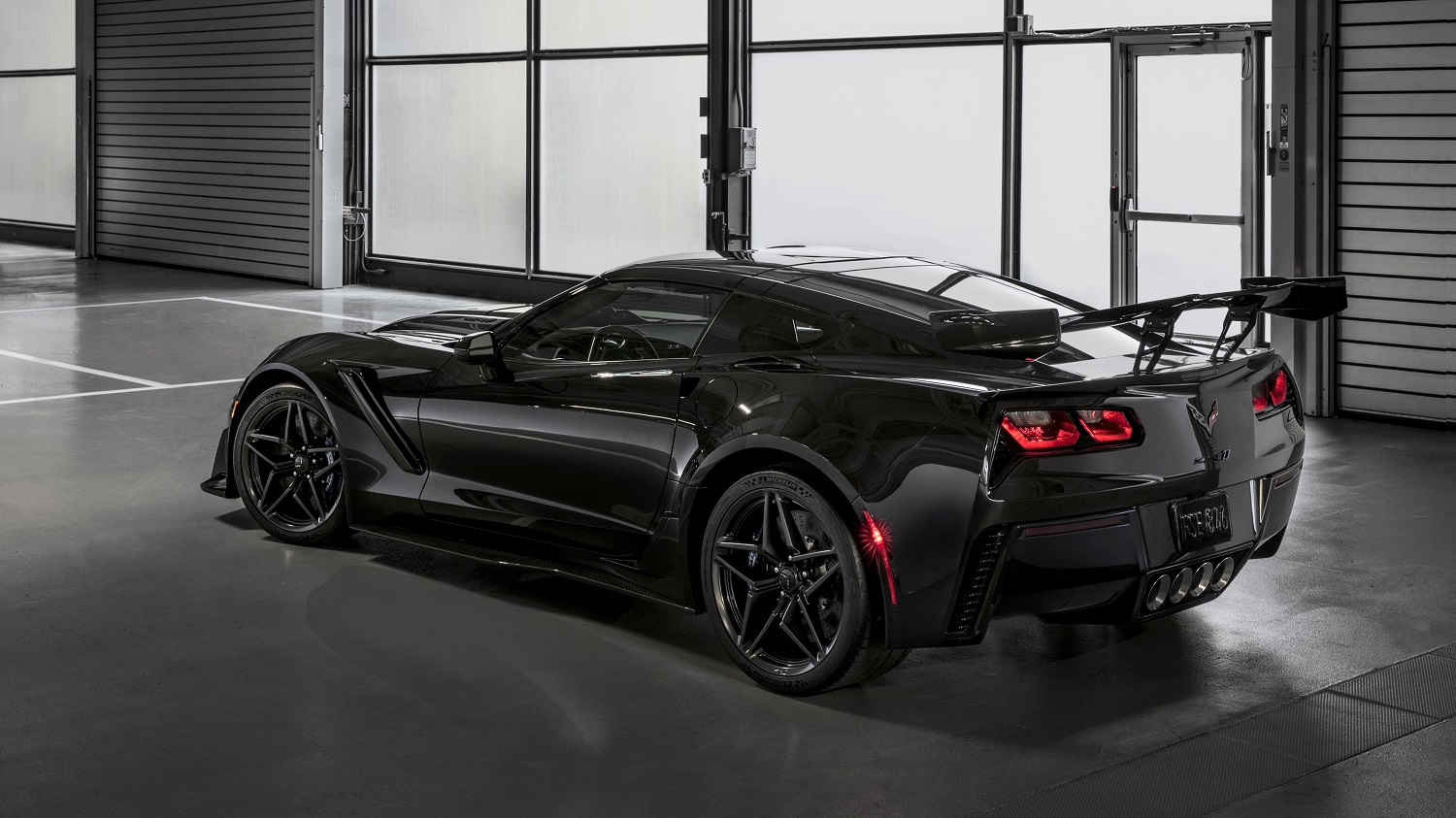
The Bow Tie crew waited until the C7’s final model year to go all-out with a new ZR1, creating what it called “the fastest, most powerful production Corvette ever.” The supercharged LT4 6.2-liter small-block in the Z06 already produced 650 horsepower and the same amount of torque, but Chevy pushed even further with the ZR1’s LT5. An Eaton supercharger with a significantly higher capacity, larger 95-millimeter throttle body, and two fuel injectors per cylinder (one for port and one for direct fuel injection) contributed to the super-Vette’s staggering 755 horsepower and 715 lb-ft of torque. These were jumps of 64 and 53 percent, respectively, from the Stingray’s LT1 with the available performance exhaust.
C8 (2025-)
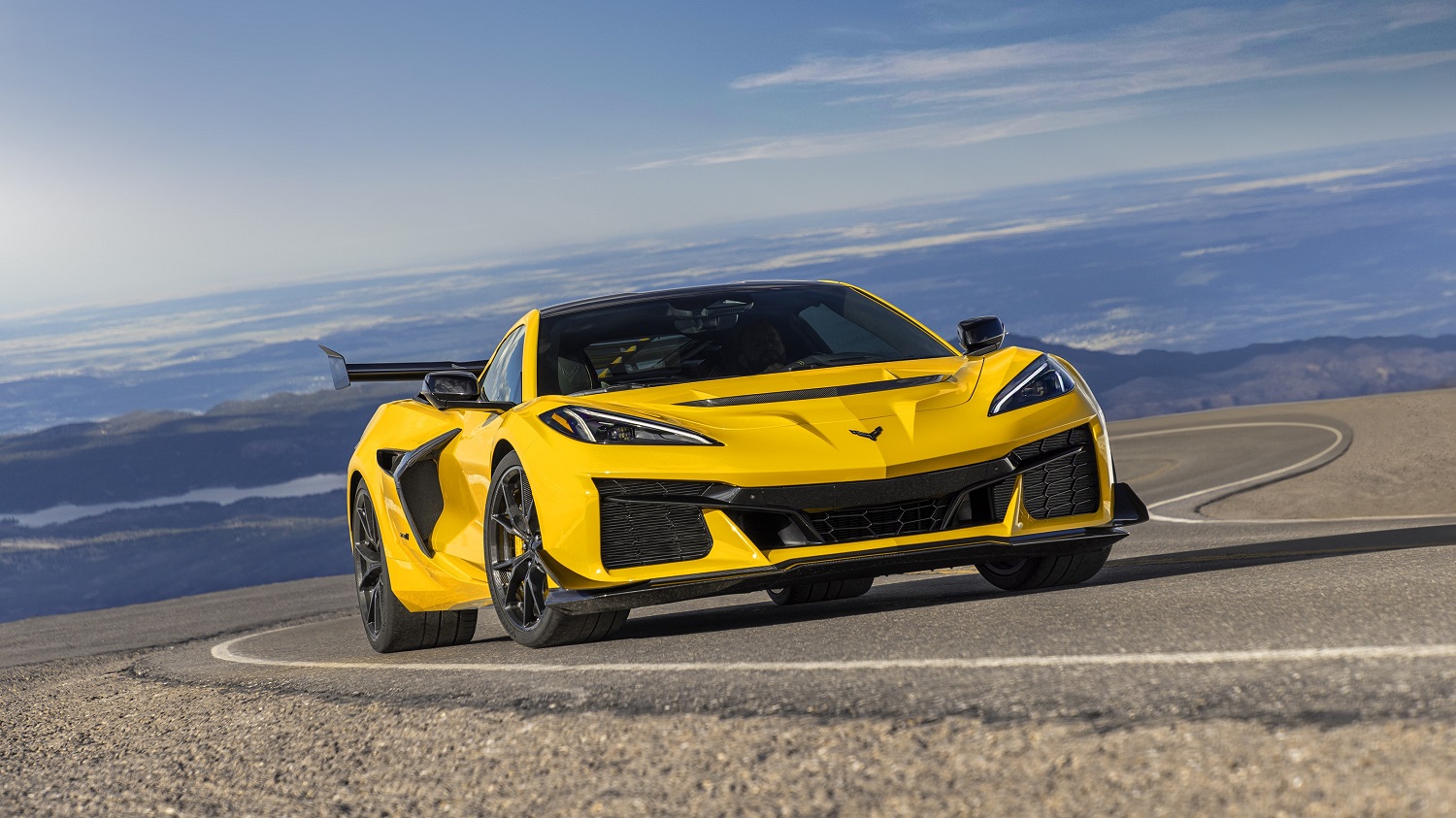
For the latest iteration of the ZR1, Chevrolet could have gone high into the triple digits, pushed out a press release, and called it a day. But it decided to shoot past the 1,000-horsepower mark with the 2025 ZR1. Its LT7 5.5-liter V8 is packed with goodies and goodness: double overhead cams, flat-plane crankshaft and, for the first time, twin turbos.
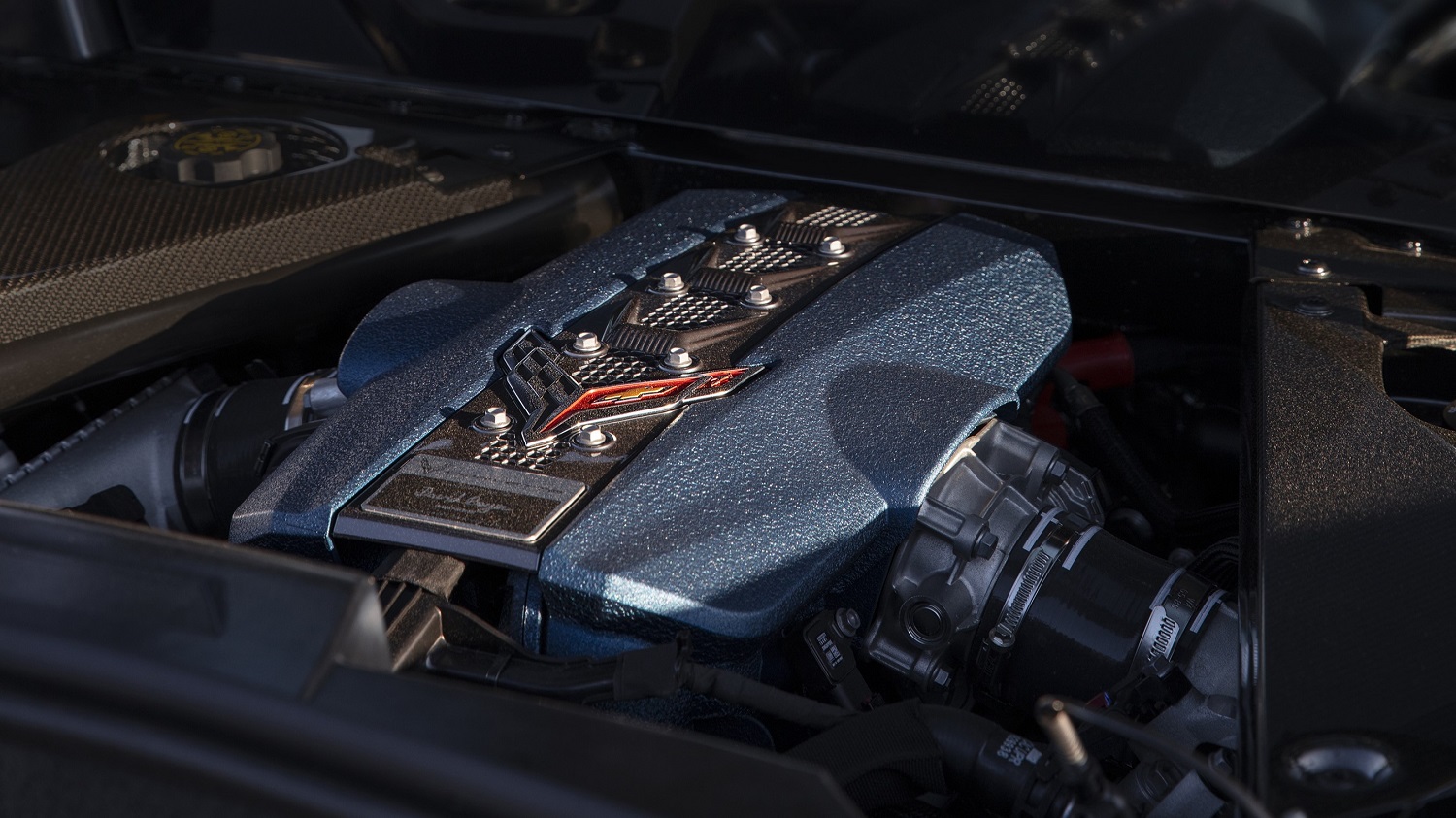
So how far past 1,000 did Chevy go? The ZR1’s final figures are 1,064 horsepower and 828 lb-ft. That means it’s 40 percent more horsepowered and 15 percent torquier than the previous ZR1, which was already eight cylinderfuls of insanity. How does it measure up against the current Stingray’s LT2? Even when that’s hooked up to the optional performance exhaust, there’s still a gap of 569 horses (nearly 115 percent!) and 358 lb-ft (76 percent) between it and the ZR1’s LT7.
Just because we may like something doesn’t mean it’s the best in any manner. We can’t always determine what we like and why, but it would mean a whole lot to be able to objectively articulate a particular car’s misgivings. Below is a list of cars that I feel have a certain awkwardness to them, but that shouldn’t stop anyone from liking them.
The impetus for this story came as I was compiling a list of singers/groups with voices that people either adore or despise. However, this is an automotive website, so I can’t write about rock music. But what about cars that are somewhat polarizing? Yeah! And I can pair a car from a particular year with a singer’s music from the same year—this’ll write itself, right?
Okay, maybe it’s not as easy as that, but let’s see what I can whip up. I decided to skip Yoko Ono because it was too difficult to choose from so much of her output.

1968 Pontiac Grand Prix
As a kid, I loved anything with hidden headlights, and the fleeting sightings of the 1968 Pontiac Grand Prix were always a treat. But let’s be honest: This Grand Prix was a fine barometer of the design bankruptcy Detroit was about to experience en masse within five years. Once a fleet-footed full-size personal luxury car that influenced the industry, the Grand Prix ended up becoming a couch potato. Don’t get me wrong—I would lust for a 428 HO four-speed car like the one I looked at in Ann Arbor 25 years ago, but the Grand Prix is a bloated automobile that seems to have been caught in a production deadline before certain issues could be corrected.

While not a group familiar on this side of the Atlantic, the Small Faces were a seminal Mod band fronted by Steve Marriott, whose big voice was a love/hate affair for some. In 1968, the group launched “Ogden’s Nut Gone Flake,” the group’s final album before Marriott left to form Humble Pie (which should be more familiar to Americans, just the Faces, the Small Faces’ successor, should be). There are folks who would say Marriott was the best singer in rock, but there’s enough in his voice that would make others recoil.
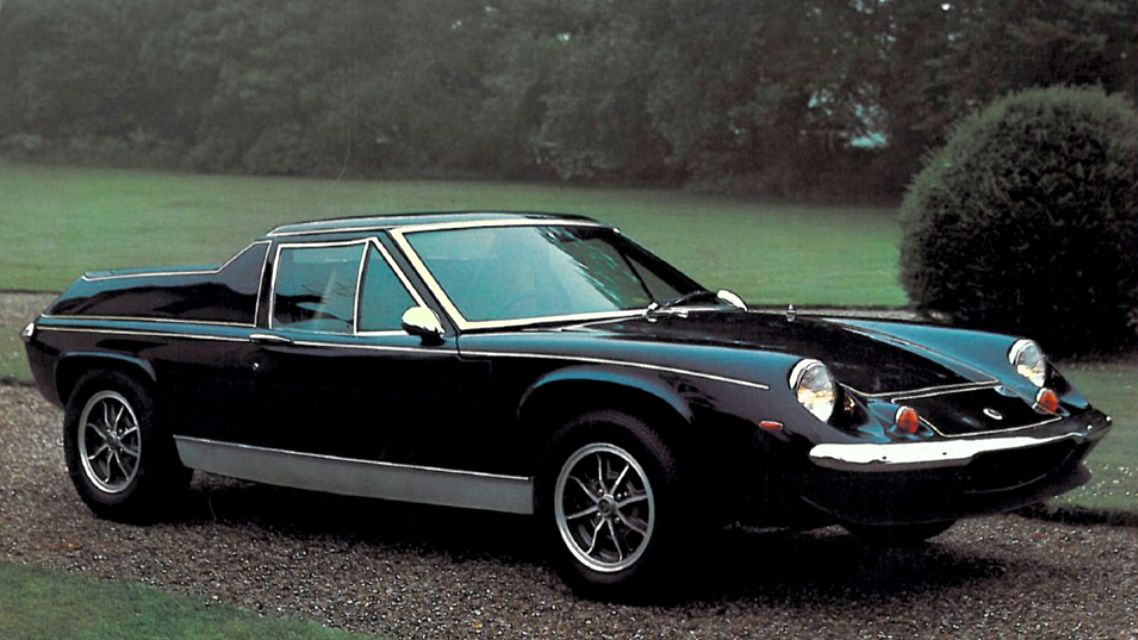
1970 Lotus Europa
This is one of the first Matchbox models I remember and, even as a know-nothing kid, I thought it was ugly. A chance sighting in Wilmington, Delaware (of all places) didn’t temper my perception. Adulthood hasn’t changed my paradigm much, although I have a certain respect for the attempt to design a mid-engine car around a particular chassis architecture. For those who enjoy sports cars and know how to drive them properly, the Europa was probably a neat car, but it continues to polarize in an “It came from Norfolk!” sort of way.
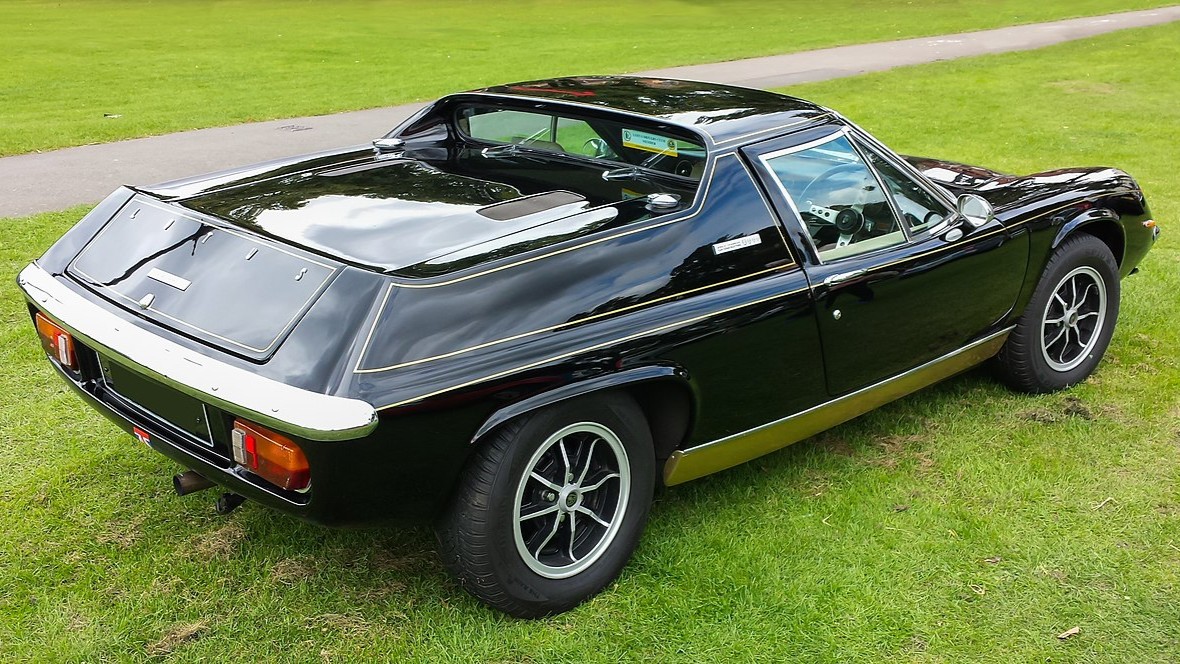
Around 25 years ago, I caught a movie called Stamping Ground, which featured groups performing at the Holland Pop Festival in Kralingen. The voice I heard was about as obnoxious as I’ve ever experienced, featuring a trilling quality that would put Jello Biafra to shame. There was absolutely no commercial value to the song “Drowned in Wine” even though there were hippies dancing to it. To this? I was familiar with Music from a Doll’s House and felt it was one of the best Brit LPs from 1968, but Family was a different band in 1970. Nonetheless, my interest piqued, I picked up the CD of A Song for Me several years later, which contained this song and others, and found it to be quite good. (If the name of the band sounds familiar, it’s because Ric Grech left Family to join Blind Faith.)
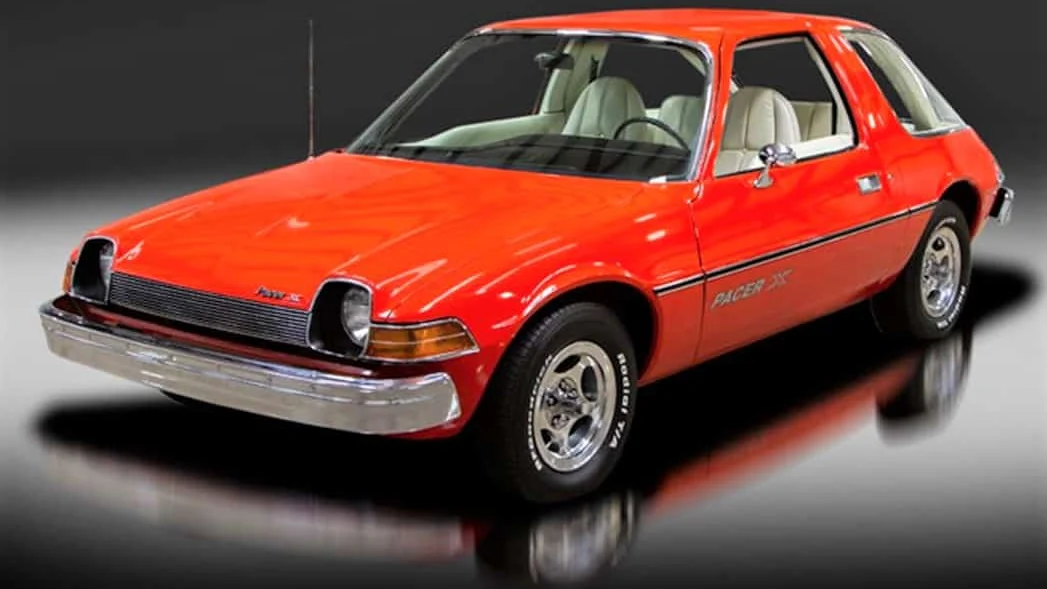
1975 AMC Pacer
My kindergarten teacher had one of these. I don’t recall any stigma tied to it, though later cars like the Spirit and Eagle seemed to be half-baked designs with little appeal compared to their Big Three competition. I even had a Hot Wheels die-cast with an engine in the rear, so the Pacer couldn’t be that bad, right? But popular culture has a way with ravaging certain things, and the Pacer became the butt of jokes for the 1970s and for cars of a certain era—even Wayne’s World pick up on that though, ironically, the flick was probably responsible for making the Pacer cool again. Much like the 1961 Plymouth, it’s the Pacer’s kitschiness that gives it strong collector appeal while others snicker from the sidelines.
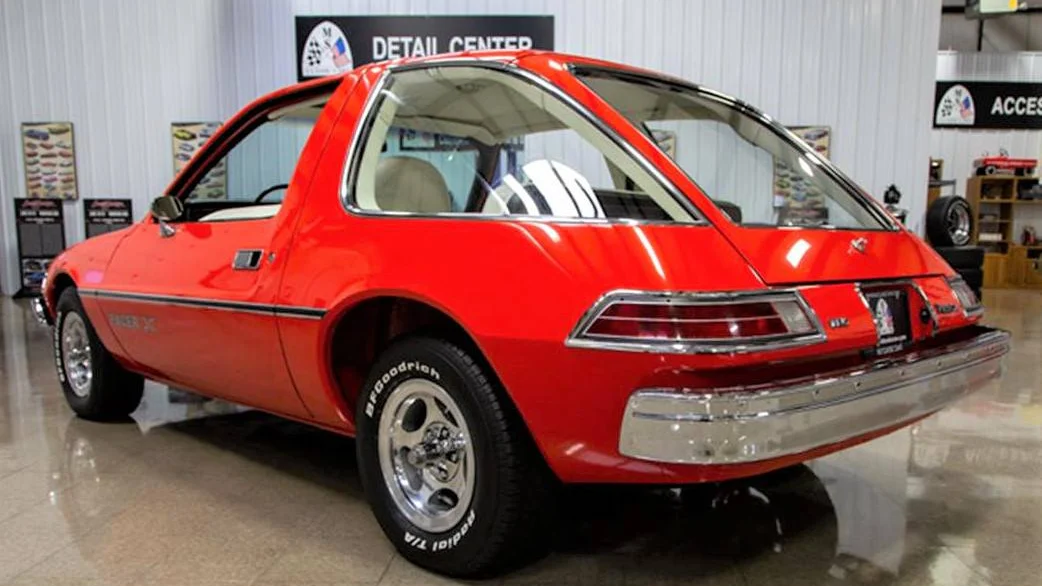
I was recently reminded of Pavlov’s Dog after listening to a podcast about Iain Matthews. Wasn’t that the proggy group from St. Louis with the singer who sounded annoying? I relistened to “Julia” from their first LP from 1975 and, yup, the singer’s voice is an acquired taste. It’s somewhat interesting because that region seems to have been a hotbed of bands with progressive influences, with Kansas being the most famous, but there are other, more obscure examples.
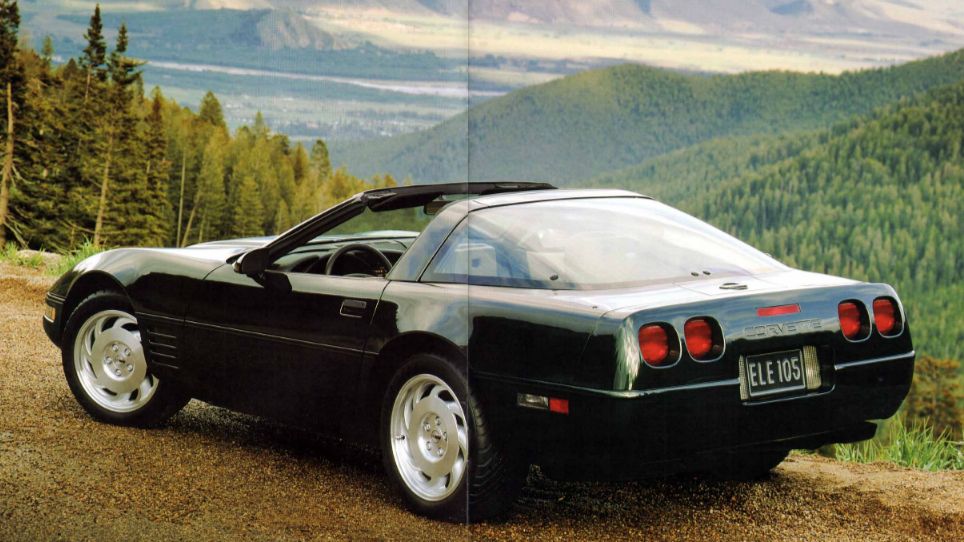
1993 Chevrolet Corvette
Introducing a feature on a vehicle and having it trickle down to other vehicles is nothing new—witness the 1969 Mustang Boss 302, which featured smooth rear flanks that would be introduced on the rest of the Mustang range for 1970. However, manufacturers sometimes mainstream certain features that come off as cannibalization. The T41 option (the GTO’s Endura front bumper) for 1971-72 Pontiac LeMans models is a popular example from the past, and it’s still happening today with certain Audis and BMWs (with trim packages to mimic S-series and M-series performance models, respectively).
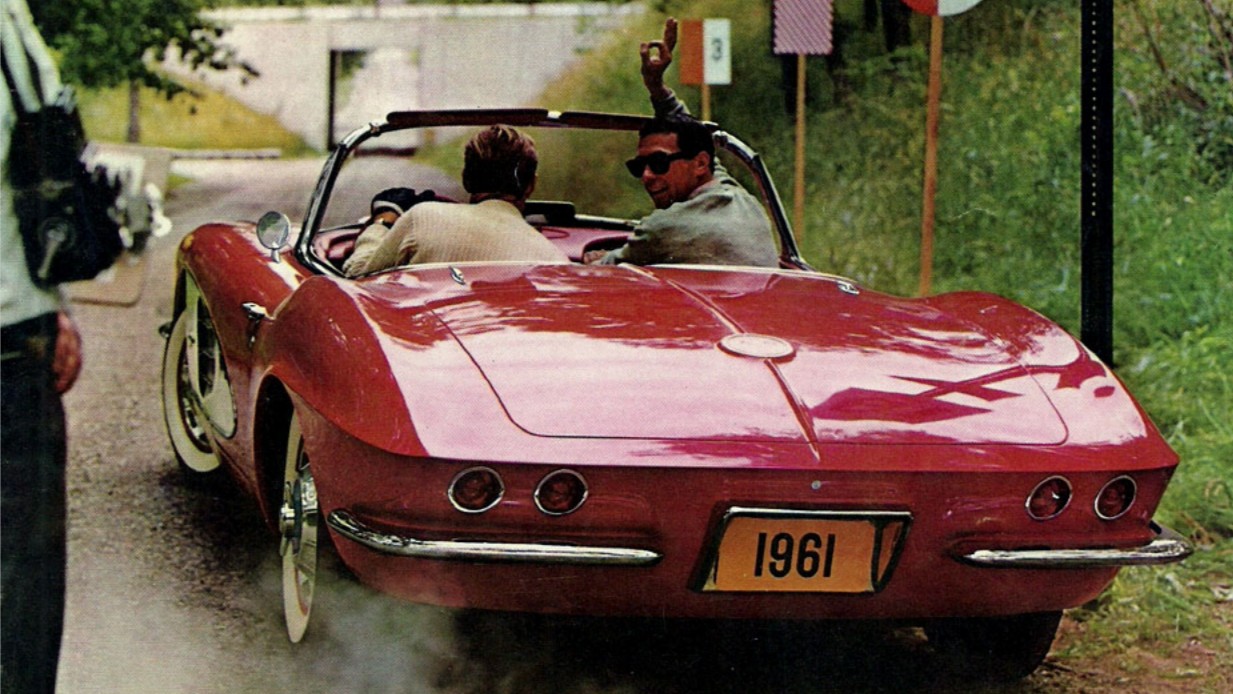
For 1990, Chevrolet introduced the Corvette ZR-1, which featured squarish taillights distinct from the traditional round. Those ZR-1 taillights were adopted across the board for Corvettes a year later, ruining the distinction the ZR-1 had among lesser Corvettes. This feature would last through the final year of the C4 in 1996. However, what’s most polarizing to Corvette fans is whether or not the taillights should be anything other than round, as has been a tradition since 1961. Are you this kind of traditionalist to a fault?
Manitoba’s Crash Test Dummies surprised everyone when its God Shuffled His Feet hit the charts, eventually selling eight million copies. The lead singer’s baritone was, let’s say, “different,” but that was part of the novelty that gave them hits like “Mmm Mmm Mmm Mmm” (#4 on the US Billboard Hot 100). I personally haven’t heard their music in at least a decade and I don’t see a good reason why I should start. However, there are people who like them, if not the place to which their hits bring them.
Any Opel car is a fairly rare sight in the U.S., and cars like the Kadett are even more rare, as they were often driven until they either rusted away or had a catastrophic mechanical failure and were then literally thrown away. For that reason, I was delighted when I found a 1967 Opel Kadett L Wagon on AutoHunter, which is why I have made it my AutoHunter Spotlight for the day.
The Kadett has a long history dating back to 1936, when the first compact model was produced by Opel in Germany. There was an expected gap in production after 1940 due to the war and then, the long German reconstruction that followed, but in 1962 the Kadett was back in production as a new model known as the Kadett A.

In 1965 Opel launched the second generation of the postwar Kadett, the series B. The Kadett B was available as a two-door coupe, fastback, sedan and a wagon. This Kadett was heavier and larger than the old version of the car, resulting in more interior room. (It is also interesting that the new Opel GT sportswear was largely based on Kadett B mechanical parts.)
The car featured as our AutoHunter Spotlight is a 1967 Kadett L in wagon form, which was actually officially called the Kadett Caravan or Kombi. The auction ends on Thursday, June 5, 2025, at 11:30 a.m. (PDT).
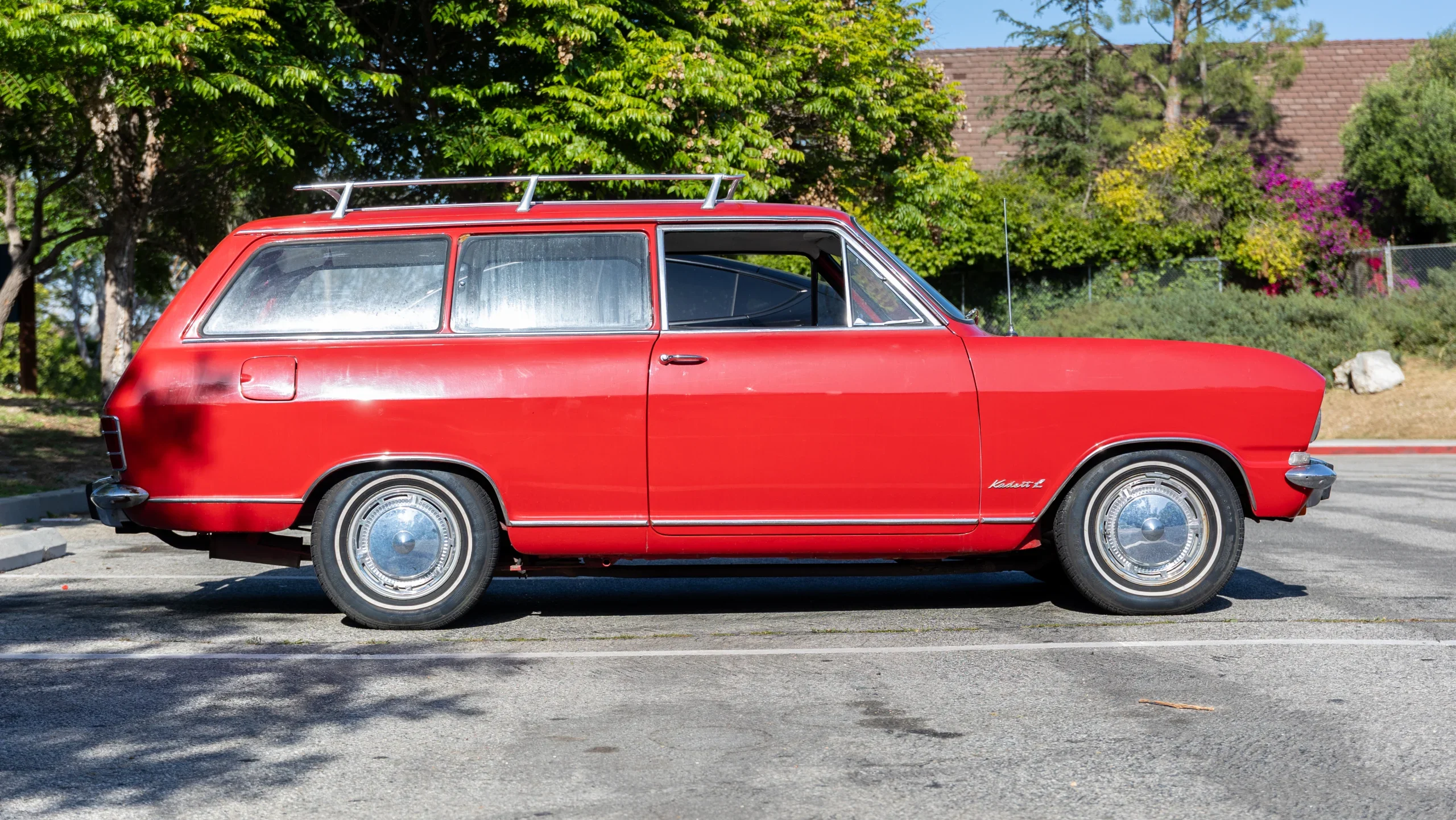
The seller describes this Opel Kadett as powered by a 1.9-liter inline-four mated to a two-speed Powerglide automatic transmission. Finished in Flame Red over a black vinyl interior, this classic station wagon is offered with the original owner’s manual, service records and a clear title.
The owner states this Kadett has its original drivetrain and has covered a total of only 42,390 miles from new.
The Flame Red paint on the body looks to be in good shape and the door gaps appear to be good. Overall, this looks like a clean example of a car that has become extremely rare and seldom seen in this country. It is riding on 13-inch stock steel wheels with factory chrome hubcaps. The 175/80 Deluxe Classic Steel-Belted All Season whitewall radial tires have had only about 1,000 miles put on them since they were fitted.
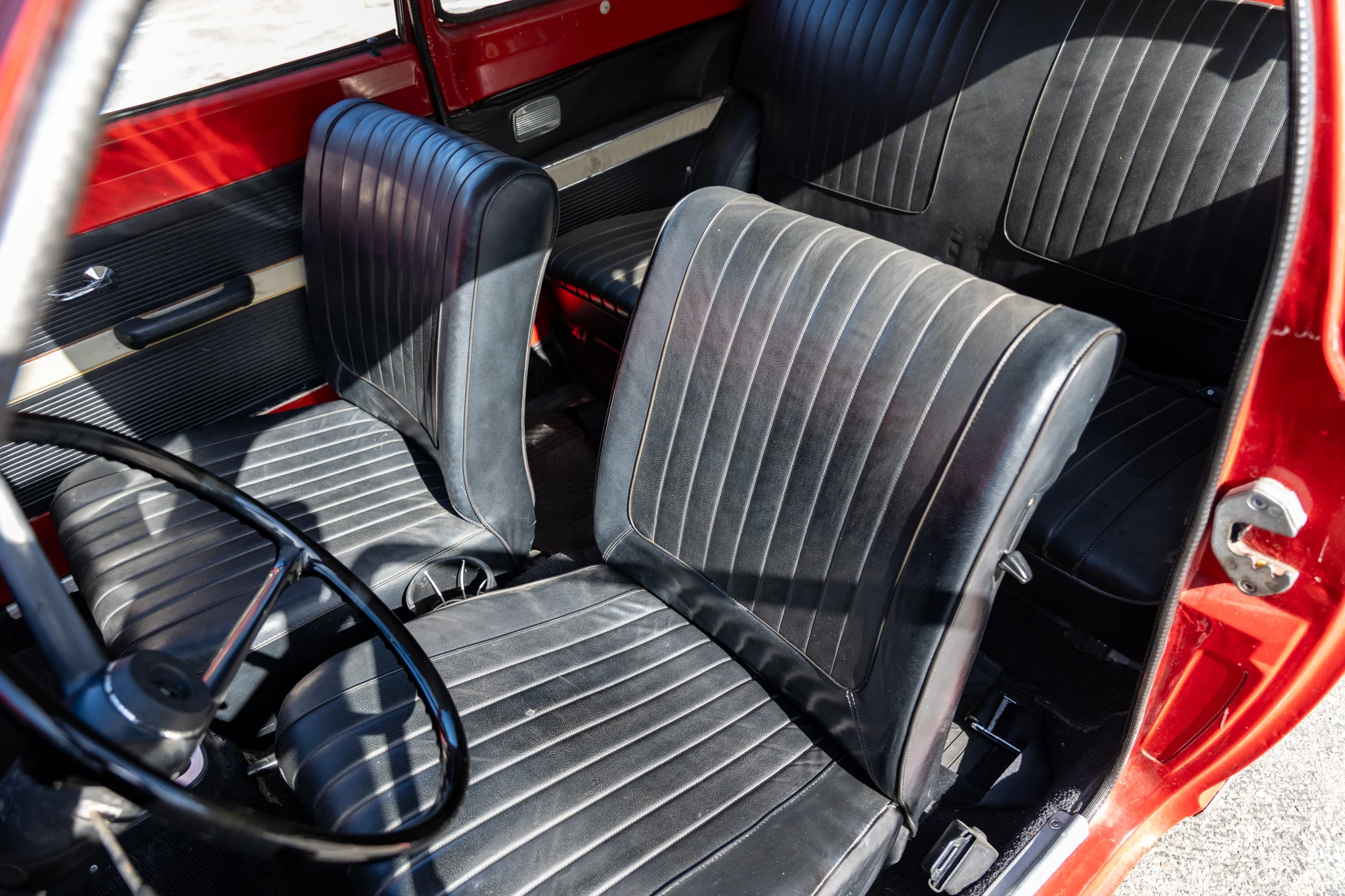
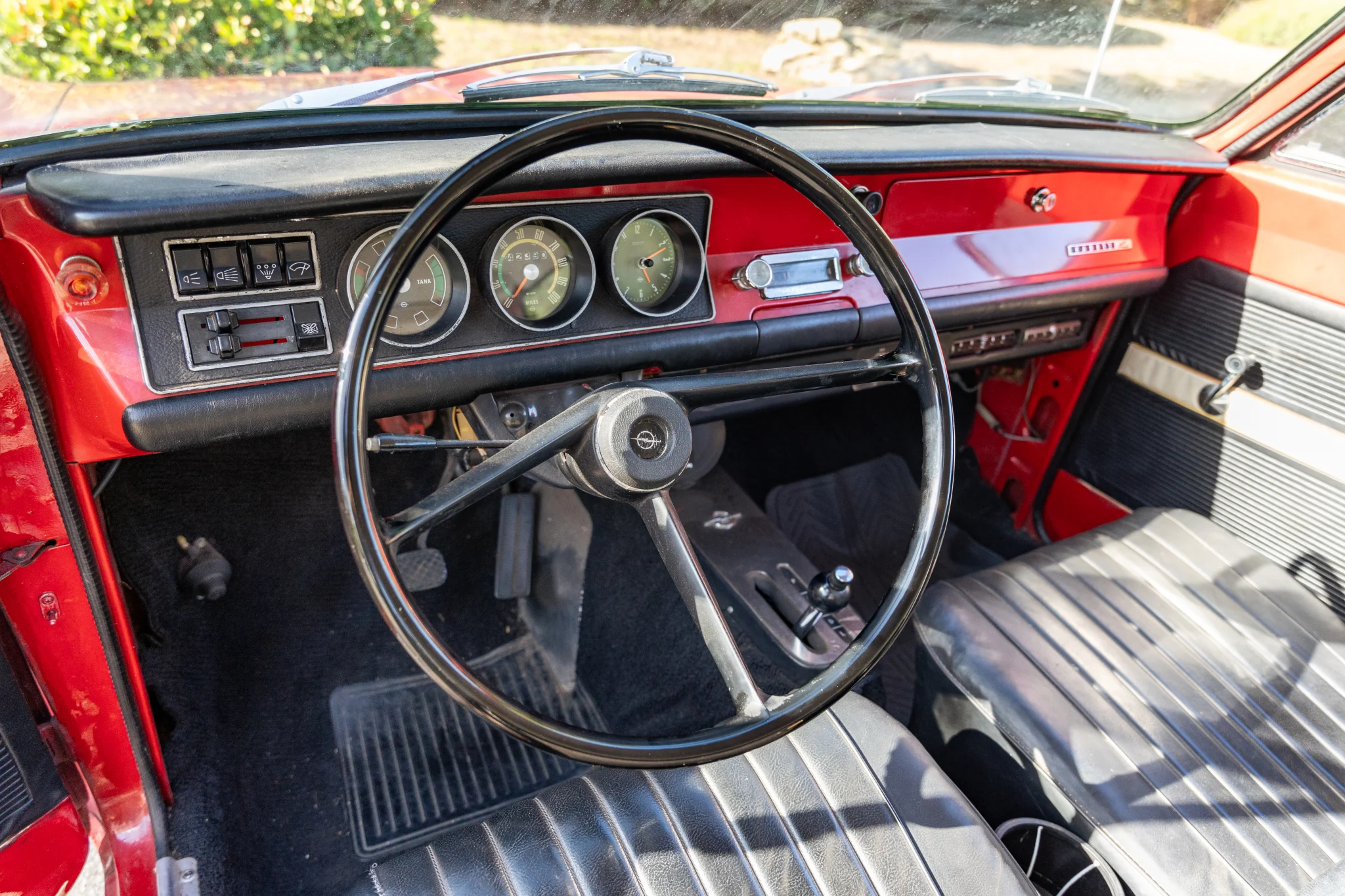
The interior of this Kadett features bucket seats with black vinyl upholstery that, from what I can tell, seem to be finished in both the correct pattern vinyl and the correct stitch pattern. The same is true with the door cards and the dash (which does have a few cracks), both of which appear to be in good shape and of the original type fitted to this Kadett when new.

Under the hood is the 1.9-liter inline 4-cylinder engine with a Weber 2-barrel carb used to deliver fuel, which was installed in 2022. The seller also states that the first owner had this car’s engine swapped with the 1.9-liter when it was new and added the Powerglide transmission to replace the 4-speed. The standard engine in this Kadett would have been a 1.1-liter, so this was a good idea. Additional service history includes a complete tune-up in 2019 and the addition of a new generator in 2021.
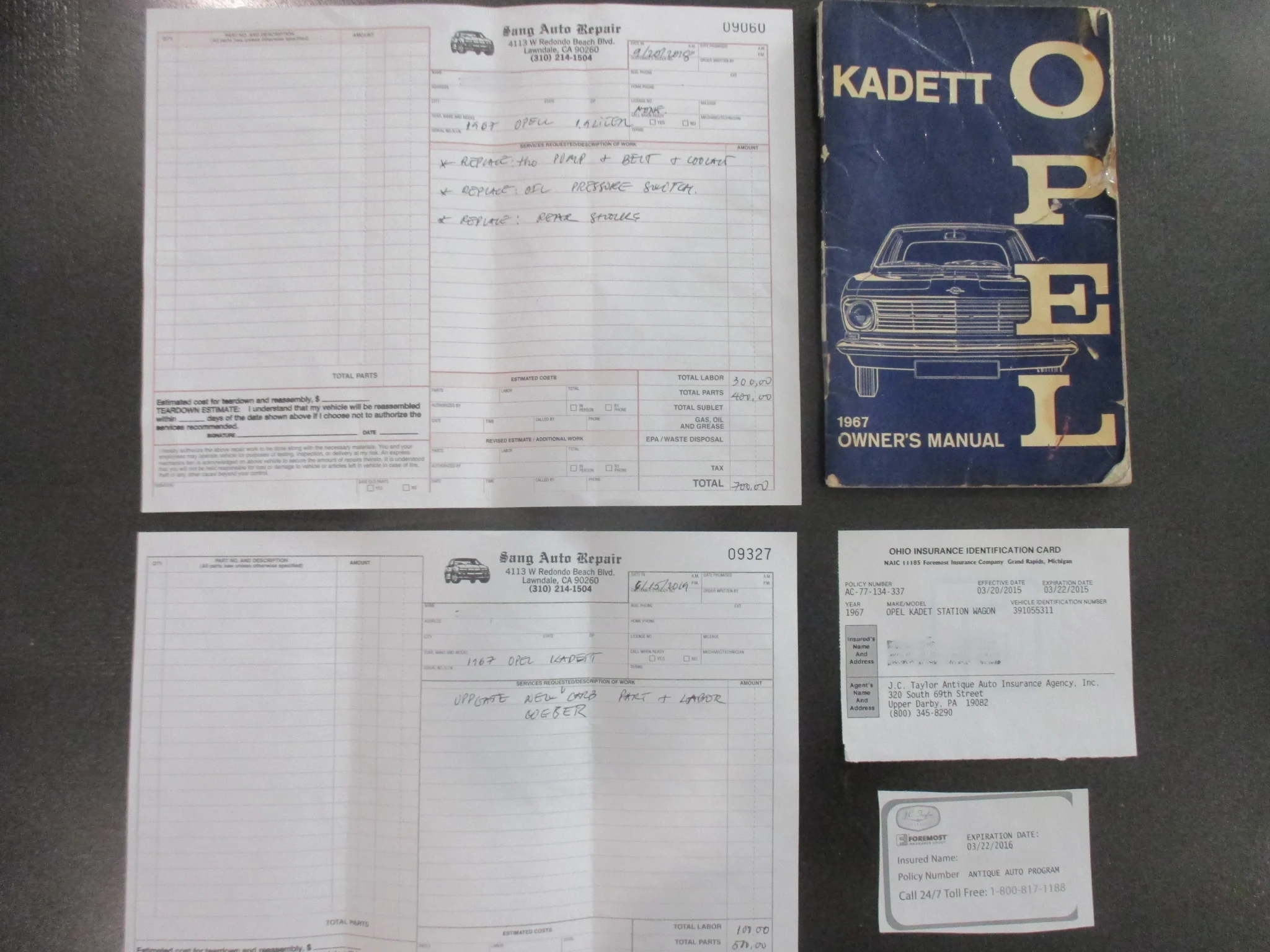
Overall, this looks to be one of the nicer examples of a Series B Kadett I have seen in years. It would be a perfect car to take and show at the Carlisle Import Show, which takes place each year in May and happens to have more classic Opels on display than probably anywhere else in the U.S. It is also an obvious choice as a Concours d’ Lemons entrant and would be a prime candidate to win a class award there.
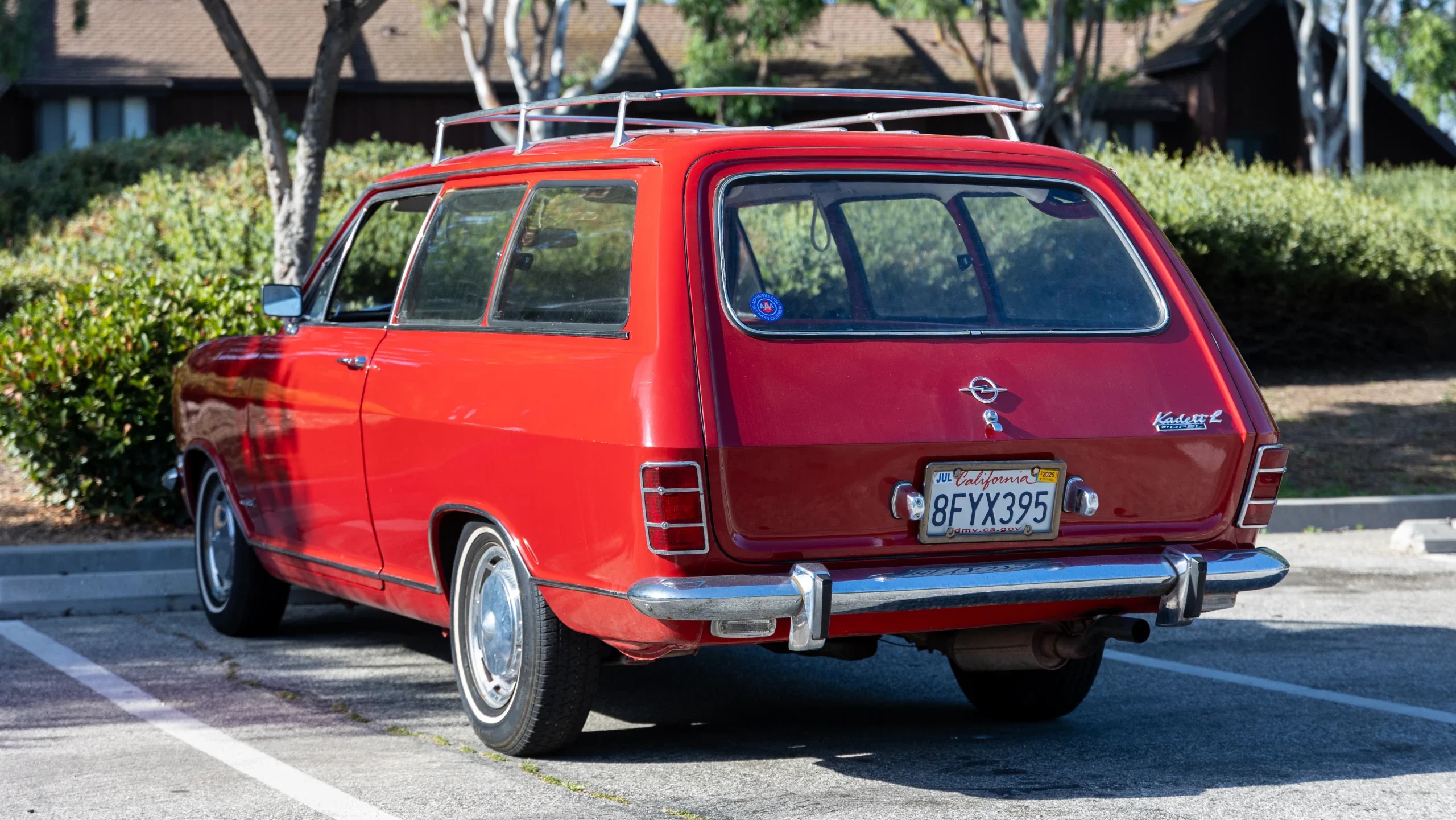
One thing I can all but guarantee is that you are not likely to run not another one of these cars too often, no matter where you live, as their survival rate is very low. If you are looking for a unique and useful classic German car that is different than all the rest, you may want to place a bid or two on this Kadett.
The auction for this 1967 Opel Kadett Wagon ends on Thursday, June 5, 2025, at 11:30 a.m. (PDT).
Visit the AutoHunter listing for more information and a photo gallery
Double T Cruise in March 2025 – Double T Detailing, based in Gambrills, MD., has established itself as a cornerstone in the community through consistent growth and expansion into the detailing product distribution sector. The business offers a comprehensive range of automotive cleaning and detailing products. Double T kicked off their 2025 cruise in nights […]
The post Double T Cruise in March 2025 appeared first on CarShowz.com.
Being a mainstream brand meant appealing to the masses. But there also was a structure where, over time, you’d move up the hierarchy to more prestigious brands. In the case of Ford, there was Mercury and Lincoln, but our Pick of the Day was Ford’s way of keeping Ford folks within the fold. This 1967 Ford LTD two-door hardtop is listed for sale on ClassicCars.com by a dealership in Hopedale, Massachusetts.
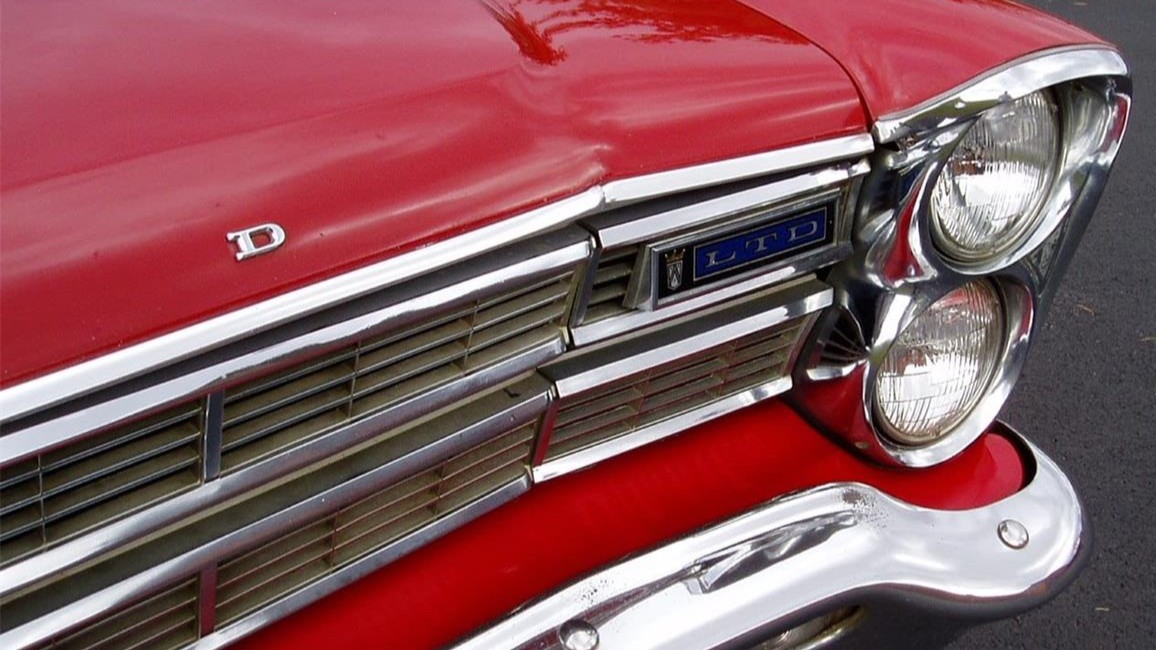
When Ford introduced its redesigned full-size cars for 1965, it was done at a time when the Big Three featured all-new full-sizers. Ford was one of several brands that had copied Pontiac’s vertical headlight configuration, but equally as distinguished was the new addition to the product line: LTD. Officially known as the Galaxie 500/LTD, the LTD two- and four-door hardtops offered “an all-new kind of Ford with luxury totally new for Ford’s field.” Standard was a 289 two-barrel V8 with Cruise-O-Matic Drive automatic. Standard features included a “Limousine-Luxury” cloth-vinyl interior, color-keyed headliner, unique cut-pile carpeting, rear seat center arm rest, bright seat side shields, chrome pedal trim, padded instrument cluster, courtesy lights, lighted front ash tray and glove box, trunk light, backup lights, and full wheel covers.
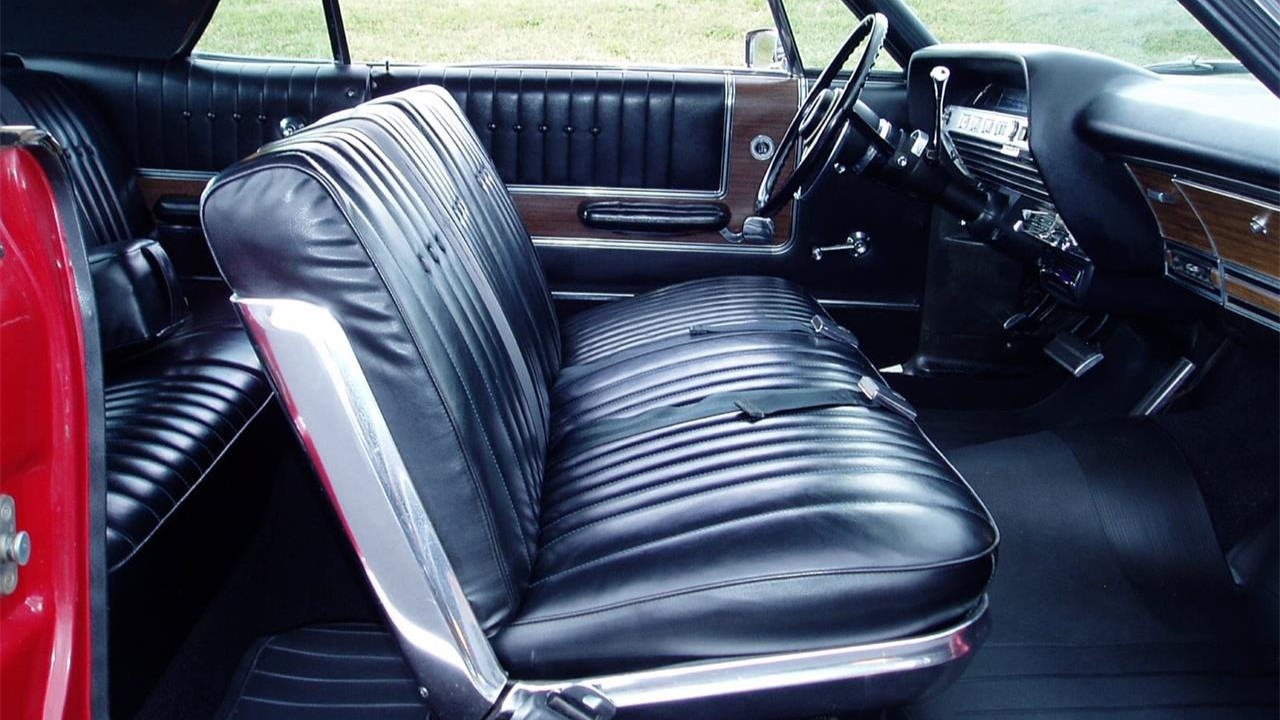
A Lincoln it was not, but the LTD was a hit in the market, leading to Chevrolet introducing the Caprice mid-year (initially only available as a four-door sedan and, interestingly, featuring a standard three-speed manual); for 1966, Plymouth introduced the Fury-based VIP, and AMC introduced the Ambassador DPL.
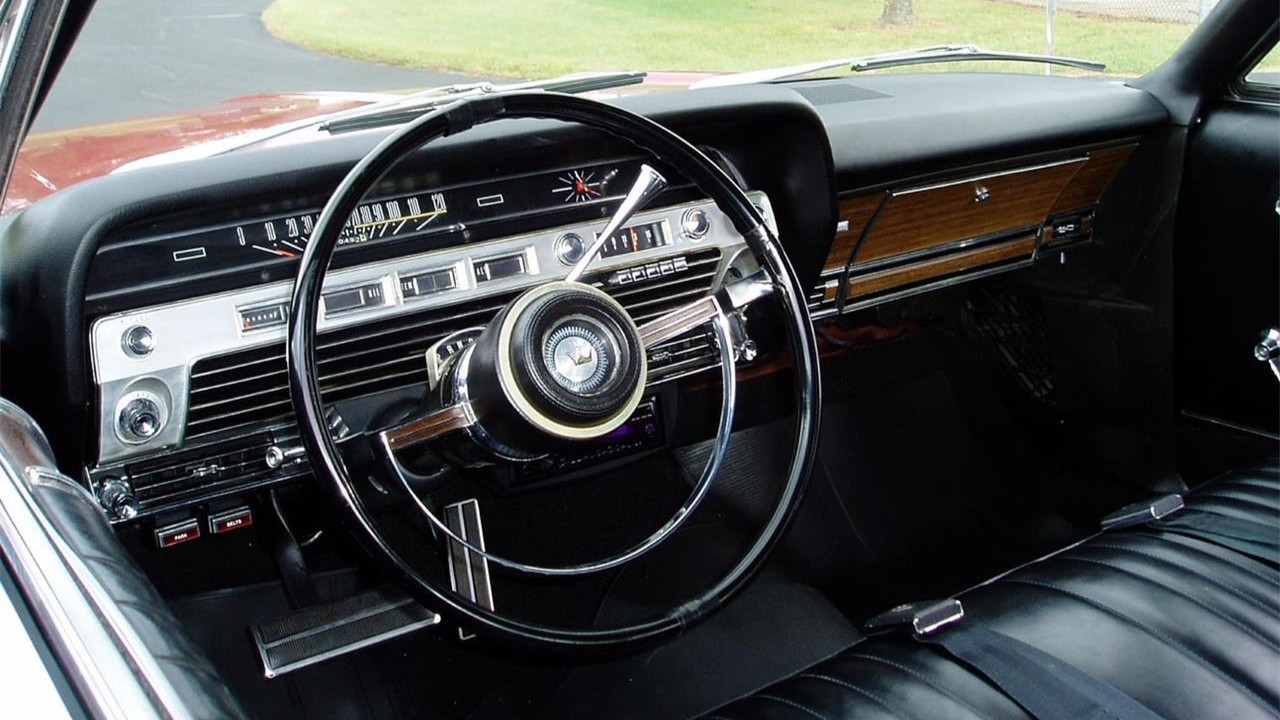
For 1967, Ford again redesigned its full-size line. “The car that introduced a new world of luxury to Ford’s field,” read the brochure. New for the series was a four-door sedan, but perhaps the biggest news was the formal roof on two-door hardtops that was distinct from other models; it also included a standard vinyl roof. New standard features for all LTDs included simulated walnut door panels and Comfort-Stream Ventilation. Individually adjustable Twin-Comfort Lounge Seats with individual arm rests for driver and passenger was a new option. Beyond the standard 289, buyers could opt for a 390 two-barrel, 390 four-barrel, a 428, and two flavors of the Cobra 427: four-barrel and dual-quads (and, yes, a few were built).
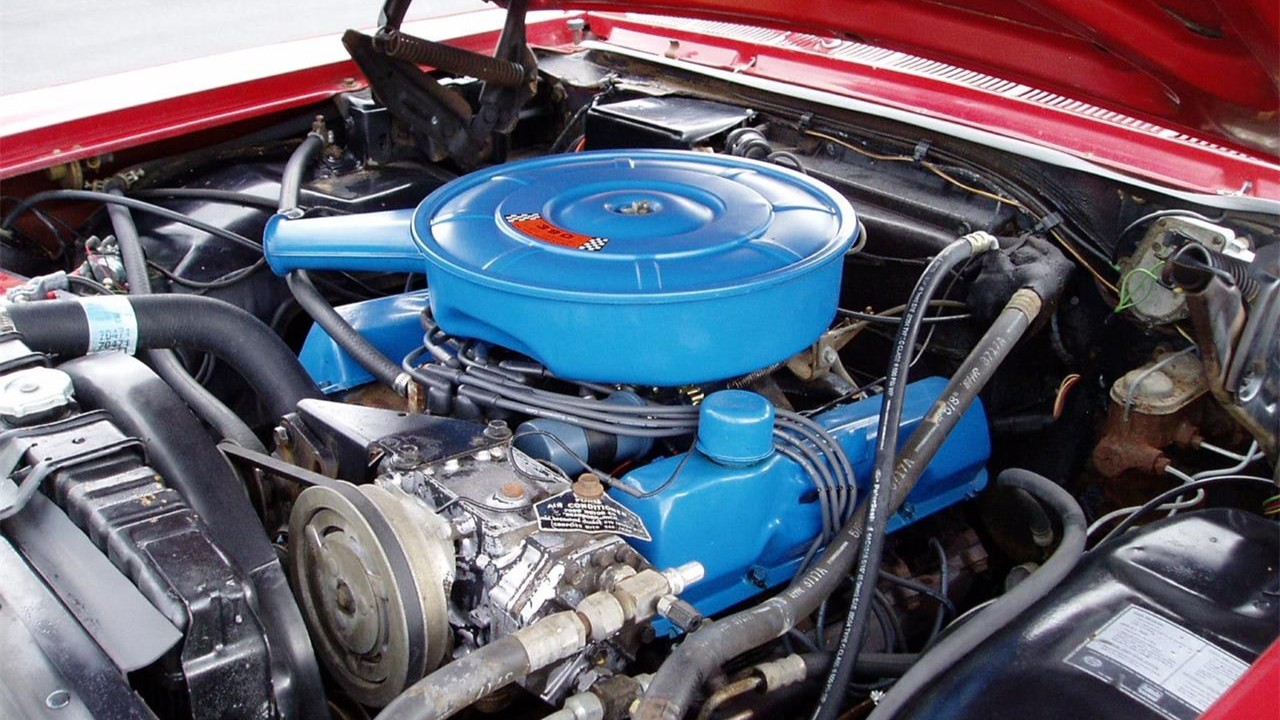
While the LTD was the top model, in typical Detroit fashion, the model would find itself being pushed down the totem pole and finding itself as the base model for 1975 (though the Custom 500 was brought back mid-year, then relegated to fleet orders and Canada).
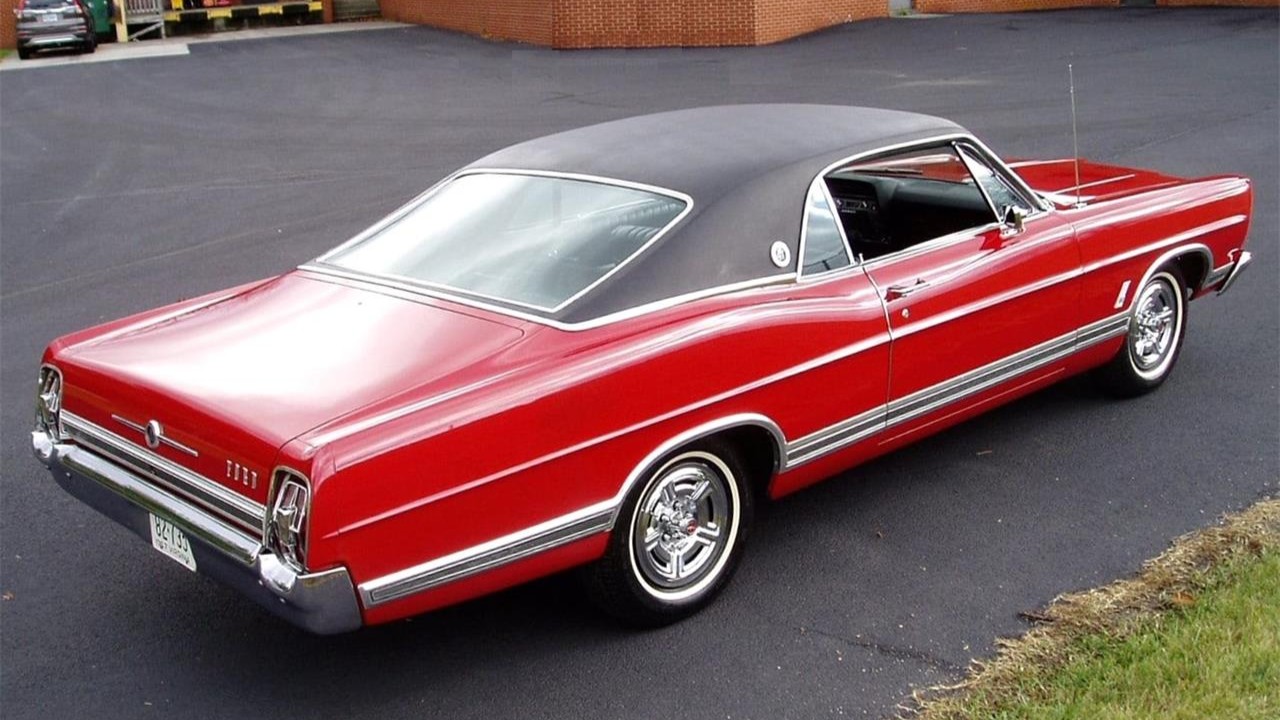
This Candyapple Red 1967 Ford LTD two-door hardtop is claimed to be 100 percent rust-free and have 100 percent of its original paint, top, and tinted glass. Sold new at Harris Motor Company in Waldron, Arkansas, it was purchased by a Mr. Carl Dollard on December 6, 1966. Features include Z-code 390 four-barrel with C6 automatic, dual exhaust, black vinyl bench seat, air conditioning, power steering, AM radio with rear speaker, remote driver-side mirror, passenger-side mirror, and Deluxe seat belts. Mag-style wheel covers and door edge guards have been added, as well as a modern stereo system neatly installed under the dashboard.
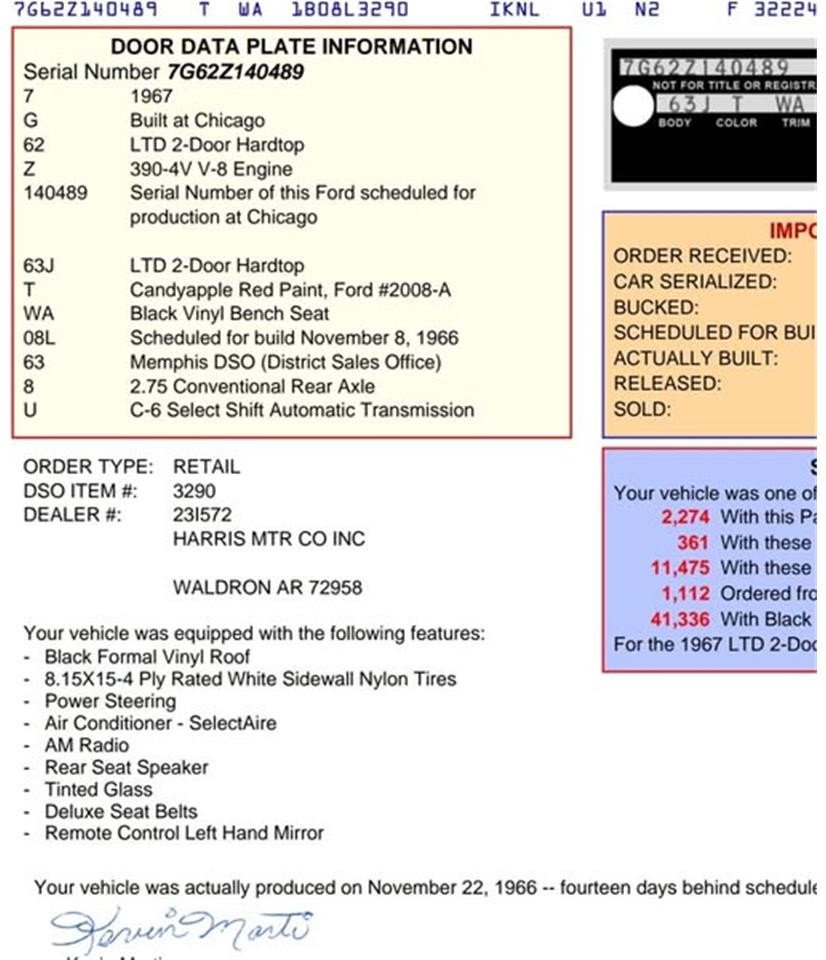
“This 1967 Ford LTD 2 Door Fastback is breathtaking in condition,” says the seller. “A wonderful running and driving 57-year-old automobile!” It’s not often that you can find a stylish classic with original paint and a big-block at an attractive price, but this LTD seems like a deal at $26,500.
Click here to view this Pick of the Day on ClassicCars.com
This 1940 Ford 1/2-ton pickup was refurbished and customized circa 2000. The truck rides on a TCI chassis and a Heidts Mustang II-style front end with adjustable coilovers and discs, a four-link rear end with air springs, and steel wheels with whitewalls. A 350ci V8 was added in ~2017, and it is topped by an Edelbrock carburetor and a Chevrolet-branded aluminum intake. Power is routed through a three-speed automatic and a 9″ rear end. The body was repainted metallic blue and has fiberglass rear fenders and a wood-lined bed, while inside the cab was customized with tan upholstery, a tilt wheel, power windows, air conditioning, a touchscreen Bluetooth head unit with a rearview camera display, and Stewart-Warner gauges. Recently acquired by the seller, this Ford pickup is now offered with a clean Idaho title in the names of the seller and their spouse.
The steel bodywork and fiberglass rear fenders are painted metallic blue, and the seller notes the work was completed several decades ago. Close-up photos of the paint, trim, and imperfections are displayed in the gallery, and the windshield wipers are inoperative.
The pickup bed was refinished with stained wood slats and polished runners.
The seller tells us the truck rides on a TCI chassis. The Heidts Mustang II-style independent front end has tubular control arms, coilovers, rack-and-pinion steering, and power-assisted discs. The four-link rear end utilizes air springs connected to a tank under the pickup bed. Light-blue 16″ steel wheels wear chrome hubcaps and are mounted with whitewall tires. The seller reports that upper and lower control arm bushings were recently replaced.
The bench seat is trimmed in tan upholstery and joined by a body-color dashboard. Appointments include power-operated windows, air conditioning, and a touchscreen Bluetooth head unit with a rearview camera display. The headliner is stained, and the rear bulkhead covering is torn. The pump for the air springs is mounted beneath the seat, and the system is managed via in-cabin controls.

The wood-rimmed banjo steering wheel sits on a tilting column and frames Stewart-Warner instrumentation. The odometer shows 17k miles, which is believed to represent the mileage on the build.
The Chevrolet 350ci crate V8 is believed to have been installed in ~2017. The engine features an Edelbrock carburetor, a Chevrolet-branded aluminum intake, and electronic ignition, and cooling is handled by a Walker brass radiator and an electric fan. The seller notes an exhaust leak is present at the passenger-side header.

Power is sent to the rear wheels through a three-speed TH350 automatic transmission and a 9″ rear end. Four-into-one headers feed into a dual exhaust system.
Throughout automotive history, few engines have captured enthusiasts’ hearts quite like the iconic V8.
With their unmistakable rumble, raw power, and thrilling performance, V8-powered cars have long symbolized freedom, speed, and driving excitement.
While modern trends lean towards smaller, turbocharged powerplants and electrification, there’s still a passionate community that deeply misses the pure mechanical charm of the mighty V8.
Many V8-powered vehicles, once celebrated for their commanding presence and exhilarating drives, have sadly faded from the spotlight.
Join us as we revisit ten legendary yet often-forgotten V8 monsters that undoubtedly deserve a roaring comeback on today’s roads.
Japanese Domestic Market (JDM) cars have captured the hearts of auto enthusiasts around the globe, thanks to their unique blend of innovation, performance, and unmistakable style.
Originating from a golden era of automotive engineering, these iconic vehicles have transcended their initial markets, influencing pop culture and motorsport alike.
From the thrilling drift scenes of Initial D to dominating global racing championships, JDM cars have created enduring legacies that continue to inspire passion in collectors, racers, and everyday drivers.
In this article, we’ll explore ten legendary JDM vehicles whose allure remains just as strong today, proving that some classics truly stand the test of time.